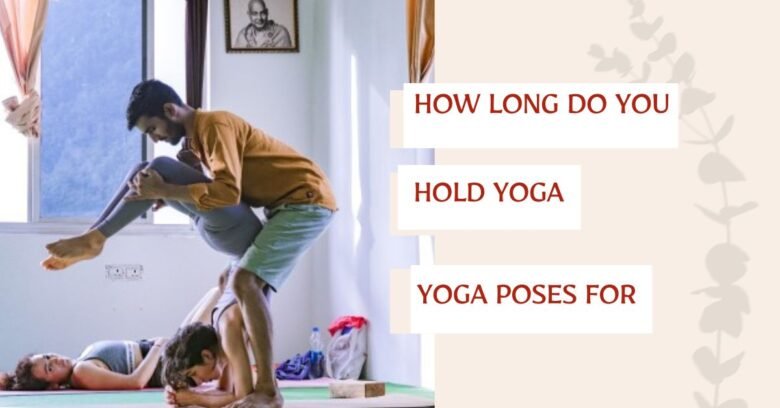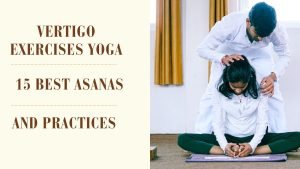How long do you hold yoga poses for.Yoga is more than just a workout—it’s a holistic practice that connects the mind, body, and spirit. Whether you’re a seasoned yogi or just starting, understanding how long to hold yoga poses, known as asanas, is crucial for maximizing the benefits of your practice. This guide will explore the basics of asanas, the importance of holding poses for varying durations, and provide expert advice and personal stories to inspire your yoga journey.
Introduction to Yoga Poses
Yoga poses, or asanas, are the foundation of any yoga practice. They range from simple stretches to complex postures that require strength, balance, and flexibility. The duration for which each pose is held can significantly impact the benefits you receive.
“The secret to mastering yoga poses lies not in how many you can do, but in how long you can hold each with grace and ease,” says Yogi Ananda.
What Are Yoga Asanas?
Yoga asanas are specific body positions designed to improve physical strength, flexibility, and mental focus. Originating from ancient Indian traditions, asanas are practiced to maintain a healthy body and a calm mind.
The Role of Breath Control
Proper breath control, or pranayama, is essential when holding yoga poses. Inhaling and exhaling deeply helps to maintain the pose and provides a steady flow of oxygen to your muscles, aiding in relaxation and endurance.
Importance of Proper Form
Maintaining proper form is crucial to avoid injuries and maximize the benefits of each pose. Focus on aligning your body correctly and listen to your body’s signals to know when to adjust or release the pose.
Duration Guidelines for Yoga Poses
How long should you hold your yoga poses? The answer varies depending on your experience level and the specific pose. Here’s a breakdown:
Basic Poses for Beginners
For beginners, it’s essential to start slow. Holding basic poses like Downward Dog or Child’s Pose for 15-30 seconds can help build a strong foundation.
Intermediate Poses
Intermediate practitioners can extend their holds to 30 seconds to 1 minute. Poses like Warrior II and Tree Pose benefit from longer holds, enhancing muscle endurance and balance.
Advanced Poses
Advanced yogis often hold poses like Headstand or Crow Pose for 1 to 3 minutes. These extended durations deepen the stretch, improve mental focus, and build significant strength.
Benefits of Holding Yoga Poses
Holding yoga poses for extended periods offers numerous benefits that go beyond the physical.
Physical Benefits
- Increased Flexibility: Longer holds allow muscles to stretch more deeply, gradually increasing flexibility.
- Strength Building: Sustained poses engage and strengthen various muscle groups.
- Improved Posture: Correcting alignment over time helps improve overall posture.
Mental Benefits
- Enhanced Focus: Concentrating on maintaining a pose sharpens mental clarity and focus.
- Stress Relief: Deep breathing and holding poses activate the parasympathetic nervous system, reducing stress levels.
- Mindfulness: Being present in your practice fosters a sense of mindfulness and inner peace.
Spiritual Benefits
- Deepened Self-Connection: Holding poses allows for introspection and a deeper connection with oneself.
- Energy Flow: Prolonged holds can unblock energy pathways, promoting a sense of well-being.
- Inner Balance: The discipline of holding poses brings emotional and spiritual balance.
Overcoming Challenges in Holding Poses
Holding yoga poses can be challenging, especially for beginners. Here are some tips to help you build stamina and flexibility:
Start Small and Build Gradually
Don’t rush into holding poses for long durations. Start with shorter holds and gradually increase the time as your strength and flexibility improve.
Use Props for Support
Yoga props like blocks, straps, and bolsters can provide support and help you maintain proper form, making it easier to hold poses longer.
Focus on Breath and Mindfulness
Concentrate on your breath and stay mindful of your body’s signals. This focus not only helps in holding the pose but also enhances the mental and spiritual benefits.
Personal Stories of Yoga Progression
Real-life experiences can be incredibly motivating. Here are some inspiring stories of individuals who have seen remarkable progress by holding yoga poses longer:
Jane Doe’s Journey
Jane started her yoga practice as a beginner, struggling to hold basic poses. Over six months, she diligently practiced extending her pose durations. Today, she feels more flexible and mentally clear, attributing her progress to consistent practice and patience.
John Smith’s Dedication
John, an advanced practitioner, dedicated himself to holding advanced poses for extended periods. He noticed profound effects on his self-discipline and focus, leading to overall well-being.
Physical Transformation
A case study of a participant highlights the physical benefits of longer pose holds. Incorporating extended holds into her routine, she experienced weight loss and muscle toning, showcasing the body’s strength and aesthetic improvements.
Emotional and Mental Wellness
One practitioner’s story of overcoming anxiety and stress through yoga is particularly moving. Focusing on extended pose holding became her form of meditation, significantly improving her mental health.
Conclusion
Holding yoga poses for varying durations offers a multitude of benefits, from physical strength and flexibility to mental clarity and spiritual growth. By understanding the basics, following expert duration guidelines, and overcoming challenges, you can enhance your yoga practice and achieve a deeper connection with yourself.
Start your yoga journey today and discover the transformative power of holding asanas. Join our Yoga Challenge for a Stronger Practice and share your experiences with our community. Explore more content on our website to continue growing and refining your practice.
—
By following this structured approach, you’ll not only master the art of holding yoga poses but also enjoy a more fulfilling and balanced life. Namaste!
Frequently Asked Questions (FAQs)
1. How often should I practice yoga to see results?
Consistency is key in yoga practice. Aim to practice at least 3-4 times a week to experience noticeable physical and mental benefits. If daily practice is possible, even short sessions can significantly enhance your progress.
2. Can I practice yoga if I have a medical condition?
While yoga can be beneficial for many health conditions, it is crucial to consult with your healthcare provider before starting any new exercise regimen. Additionally, consider working with a certified yoga instructor who can modify poses to accommodate your specific needs.
3. What if I can’t hold a pose for the recommended duration?
It’s perfectly fine if you can’t hold a pose for the suggested time initially. Start with shorter holds and gradually increase the duration as you build strength and flexibility. Using props can also help you maintain poses comfortably.
4. Is yoga suitable for all ages?
Yes, yoga can be practiced by individuals of all ages. There are different styles and modifications to cater to varying levels of flexibility and strength, making it accessible to children, adults, and seniors alike.
5. Do I need special equipment to start practicing yoga?
No, you don’t need special equipment to begin your yoga journey. A yoga mat is typically sufficient, although props like blocks, straps, and bolsters can enhance your practice, particularly when aiming to hold poses longer or with better alignment.




